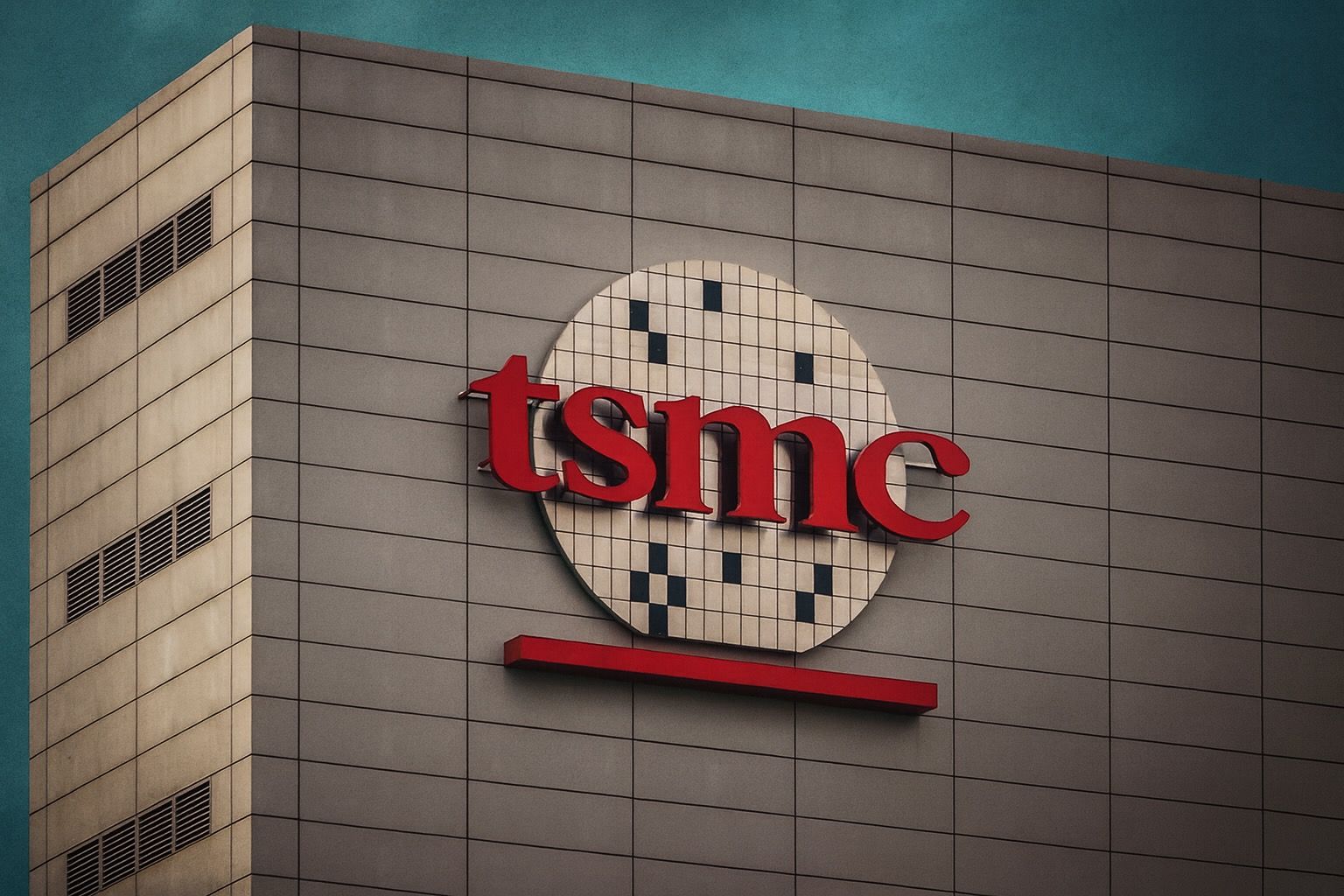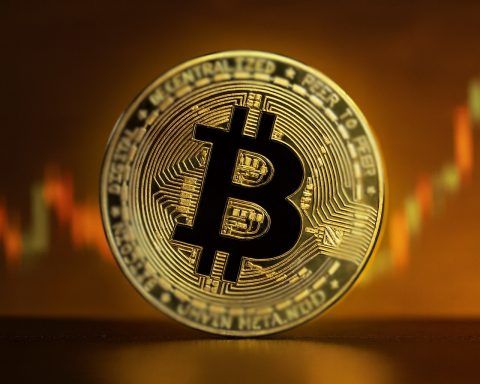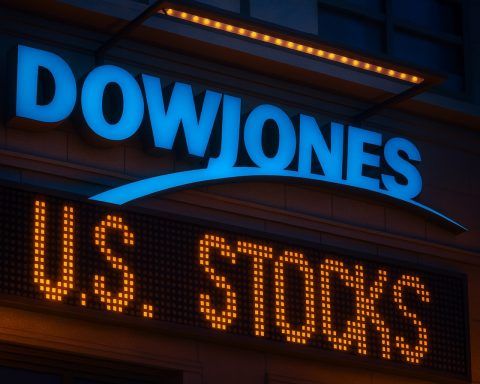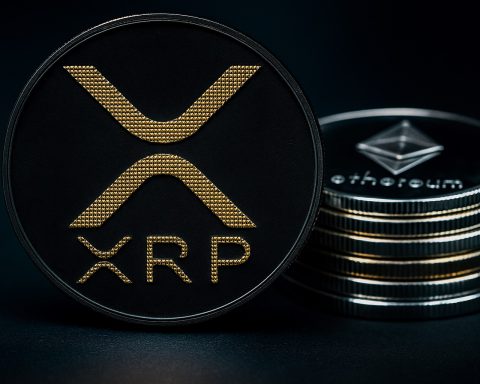Taiwan Semiconductor Manufacturing Company (NYSE: TSM) is back in the spotlight today as fresh headlines around its U.S. expansion, trade policy, and institutional flows collide with a sharp pullback in global chip stocks.
As of the latest trading on Friday, November 21, TSM shares are changing hands at around $268–270, down roughly 3% from Thursday’s close of $277.50. That move leaves the world’s dominant chip foundry about 13–14% below its 52‑week high near $311, but still more than double its 12‑month low around $134. [1]
Despite today’s drop, TSM’s story remains firmly anchored in one theme: it is the manufacturing backbone of the AI infrastructure boom — and today’s news flow mostly reinforces that role, even as the stock corrects.
TSM stock on 21 November 2025: key levels and valuation
Market data from U.S. trading shows: [2]
- Latest price: about $268.60 per ADR
- Previous close (Thu, Nov 20): $277.50
- Day move: roughly –$8.90 (–3.2%)
- Recent intraday range: roughly $267–276
- Market cap: about $1.44 trillion
- 12‑month range:$134.25 – $311.37
- P/E ratio: ~28.5; PEG ratio ~1.0
- Balance sheet: debt‑to‑equity about 0.20, current ratio 2.37, quick ratio 2.15
Even after today’s slide, TSM is still up around 40% year‑to‑date, broadly in line with recent commentary from Zacks and The Motley Fool highlighting the stock’s strong 2025 performance. [3]
From a valuation perspective, TSM trades at a forward P/E in the mid‑20s, below many pure-play AI winners like Nvidia but near the upper end of its own recent range. [4] That mix — not cheap, but cheaper than the glamour AI names — is central to how today’s analysis pieces are framing the stock.
CEO Wei doubles down on massive U.S. AI build‑out
The main company‑specific catalyst today comes from CEO C.C. Wei’s renewed push into U.S. manufacturing, highlighted in a Benzinga report and echoed by Bloomberg. [5]
Key points from his comments:
- Wei reaffirmed TSMC’s commitment to expanding its Arizona fab, calling it a core part of a roughly $165 billion U.S. investment plan that includes new fabs and an R&D center. [6]
- He argued that once a semiconductor fab starts operating, “you cannot stop” expanding capacity, citing relentless AI chip demand and U.S. pressure to shore up domestic supply. [7]
- TSM has secured about NT$147 billion (~$4.7 billion) in government subsidies over the last two years to support new fabs in the U.S., Japan, Europe and China. [8]
Wei also stressed that AI is still in its early innings, with demand expected to accelerate further — a message that aligns with third‑party estimates of multi‑trillion‑dollar AI infrastructure spending by big tech “hyperscalers” over the coming years. [9]
Interestingly, despite the bullish strategic tone, TSM stock is trading lower on the day. That suggests macro and sector headwinds are outweighing the good news in the very short term.
Top industry award underlines TSMC’s strategic importance
On the reputational front, TSMC’s leadership is getting rare recognition this week:
- Chairman C.C. Wei and former chairman Mark Liu received the 2025 Robert N. Noyce Award, the semiconductor industry’s highest honor, at a ceremony in San Jose, California. [10]
- The U.S. Semiconductor Industry Association praised the duo as “titans” who reshaped the global chip ecosystem and revolutionized manufacturing technology. [11]
TSMC itself said the award reflects the company’s “ongoing efforts and steadfast commitment to innovation” and its role in advancing the global chip industry, not just its own business. [12]
For investors, this doesn’t move the numbers directly, but it reinforces a critical narrative: TSM isn’t just another chip stock — it is now widely seen as systemically important infrastructure for the AI economy.
Trade shock avoided: U.S. backs off 300% tariffs on Taiwanese chips
A separate headline today addresses one of the market’s biggest medium‑term worries: trade and tariff risk.
According to Taiwan’s National Science and Technology Council minister Wu Cheng‑wen, the U.S. has backed away from a threatened 300% tariff on semiconductor imports from Taiwan, while the two sides finalize a broader trade agreement. [13]
Key details from the Tom’s Hardware report: [14]
- The U.S. currently applies a 20% tariff on most Taiwanese goods, but semiconductors are exempt.
- A new trade deal could involve as much as $400 billion in Taiwanese investment in the U.S., with TSMC’s $165 billion Arizona build‑out a major component.
- Taiwan is also pursuing a strategy to become an “AI island”, investing around $3 billion into AI while restricting the export of TSMC’s most advanced process technologies to keep its cutting‑edge nodes at home.
The article explicitly describes TSMC as the “crowning jewel” of Taiwan’s so‑called silicon shield, underscoring how central the company is to both U.S. and Taiwanese economic and security interests. [15]
For TSM shareholders, this is good news on two fronts:
- It reduces near‑term tariff shock risk on one of TSMC’s most important export markets.
- It reinforces that Washington has strong incentives not to damage Taiwan’s chip industry while simultaneously pushing for more on‑shore capacity.
Institutional investors reshuffle their TSM exposure
Several institutional filings highlighted today show how big money is positioning around TSM:
- The University of Illinois Foundation boosted its TSM stake by 45% in Q2, to 66,505 shares worth about $15.1 million, making TSM its third‑largest holding at roughly 6% of the portfolio. [16]
- Wealthspire Advisors LLC lifted its holdings by 20%, to 6,583 shares valued at roughly $1.49 million. [17]
- In contrast, Franklin Resources Inc. nudged its stake down by 0.4%, selling around 28,700 shares but still holding about 7.36 million shares worth $1.67 billion, or roughly 0.14% of the company. [18]
Those reports also highlight that about 16.5% of TSM’s shares are currently held by institutions and hedge funds, and they point to large increases from heavyweights like Goldman Sachs, Price T. Rowe, WCM and AllianceBernstein earlier in the year. [19]
The message: institutional appetite remains robust, even if some big managers are fine‑tuning their exposure after a powerful rally.
Fundamentals: explosive AI growth, rich margins and heavy capex
Recent earnings and research coverage continue to paint TSM as a high‑growth, high‑capex AI enabler.
From Q3 2025 numbers and related analysis: [20]
- Revenue: around $32.4 billion, up about 40% year‑on‑year, driven largely by AI‑related chip demand.
- Earnings per share (EPS):$2.92, comfortably ahead of the roughly $2.59 consensus estimate.
- Net margin: an impressive ~44%, underscoring TSMC’s pricing power and scale.
- Dividend: quarterly payout raised to $0.9678 per ADR (about $3.87 annualized, ~1.4% yield at recent prices).
Zacks notes that AI‑related revenues tripled in 2024 and are expected to double again in 2025, as TSMC ramps its most advanced nodes. [21] To support that, the company plans $40–42 billion in capital expenditures in 2025, roughly 70% of which is earmarked for leading‑edge manufacturing such as 3nm and forthcoming 2nm processes. [22]
Those investments aren’t free: Zacks also warns that new fabs in the U.S., Japan and Germany are likely to shave 2–3 percentage points off gross margin over the next several years due to higher labor and energy costs and lower early‑stage utilization. [23]
Still, the bottom line is that TSM is growing fast, remains highly profitable, and is spending heavily to stay far in front of rival foundries.
What analysts and commentators are saying about TSM today
Today’s research and opinion pieces land on a fairly consistent set of themes.
1. The “AI backbone” bull case
A new Motley Fool article, republished on Nasdaq, argues that TSM is one of the most overlooked AI winners, framing it as a “pick‑and‑shovel” play on the entire AI infrastructure cycle: [24]
- Hyperscalers like Microsoft, Alphabet, Amazon, Meta, Oracle and OpenAI are expected to spend trillions on AI data centers, networking and chips over the coming years.
- While companies like Nvidia and AMD get the headlines, TSMC manufactures many of their most advanced chips, as well as custom AI accelerators from other players.
- Because TSMC sits behind multiple chip designers, it can benefit regardless of which vendor “wins” the GPU wars.
The same piece notes that TSM’s forward P/E around 27 (as of Nov. 17) is high relative to its earlier‑year lows but still seen as reasonable given its long‑term growth prospects. [25]
2. Zacks: Nvidia still offers more upside, but TSM is cheaper
A Zacks/TradingView analysis published today pits NVDA vs. TSM and concludes that, in the near term, Nvidia has the stronger growth profile, but TSM is more attractively valued. [26]
Highlights from that comparison:
- Growth:
- Nvidia’s revenue and EPS are projected to grow around 58% and 51% this fiscal year and remain above 35% annually the following year.
- TSM is expected to grow revenue roughly 34% in 2025 and 21% in 2026, with EPS up 44% and ~20%, respectively. [27]
- Valuation:
- TSM trades at a forward P/E around 23–24,
- Nvidia around 30–31, according to the Zacks estimates. [28]
Zacks also flags geopolitical risk and margin pressure from overseas fabs as key reasons it currently rates TSM a Rank #3 (Hold), versus Rank #2 (Buy) for Nvidia. [29]
3. Street targets remain bullish overall
MarketBeat’s round‑up of analyst activity shows a broadly bullish Wall Street stance: [30]
- Consensus rating: “Buy.”
- Average price target: around $372 per share.
- Recent moves include Susquehanna lifting its target to $400 with a “positive” rating, and Needham reiterating a $360 target with a “buy” rating.
From today’s price near $270, that implies roughly 35–40% upside if those targets are met — though, as always, analyst targets are not guarantees.
Sector and macro backdrop: AI euphoria meets risk‑off mood
TSM’s drop today isn’t happening in isolation.
- Bloomberg reports that emerging market stocks are on track for their worst week since April, with investors fretting about stretched AI‑linked valuations. [31]
- A Dow Jones/Morningstar report notes that Asian chip stocks have tumbled on renewed “AI bubble” fears, with Taiwan’s Taiex index down about 3.4% and heavyweights TSMC and Foxconn leading the slide. [32]
On the policy front, a bipartisan group of U.S. lawmakers has also introduced a bill that would restrict CHIPS Act grant recipients from buying Chinese chipmaking equipment — another sign that supply chains are being re‑wired and that geopolitics will remain a core theme for the sector. [33]
Separately, an Intel‑related story making the rounds today has Intel CEO Lip‑Bu Tan denying that a recent hire brought trade secrets from TSMC, aiming to tamp down legal and IP concerns surrounding talent movement between the two chip giants. [34]
Taken together, today looks like a classic “risk‑off” day for semiconductors, with macro jitters overwhelming otherwise constructive company‑specific news for TSM.
What today’s move could mean for TSM investors
Putting all of this together:
- Short term:
- TSM is pulling back after a big year, as investors question how much AI optimism is already priced into chip stocks.
- The drop is happening despite positive headlines on U.S. expansion, trade relief and industry recognition — a sign that sentiment, not fundamentals, is driving today’s move.
- Medium term:
- Risks to watch:
- Geopolitics around Taiwan and China,
- Margin drag from massively expensive overseas fabs,
- Potential for further sector‑wide de‑rating if AI expectations cool more sharply. [37]
For now, the market’s verdict on November 21, 2025 is clear: TSM is a high‑quality AI infrastructure play that investors still believe in — but not at any price, and not without volatility.
This article is for informational purposes only and does not constitute investment advice. Always do your own research or consult a licensed financial adviser before making investment decisions.
References
1. www.macrotrends.net, 2. stockanalysis.com, 3. www.tradingview.com, 4. www.tradingview.com, 5. www.benzinga.com, 6. www.benzinga.com, 7. www.benzinga.com, 8. www.benzinga.com, 9. www.nasdaq.com, 10. focustaiwan.tw, 11. focustaiwan.tw, 12. focustaiwan.tw, 13. www.tomshardware.com, 14. www.tomshardware.com, 15. www.tomshardware.com, 16. www.marketbeat.com, 17. www.marketbeat.com, 18. www.marketbeat.com, 19. www.marketbeat.com, 20. www.marketbeat.com, 21. www.tradingview.com, 22. www.tradingview.com, 23. www.tradingview.com, 24. www.nasdaq.com, 25. www.nasdaq.com, 26. www.tradingview.com, 27. www.tradingview.com, 28. www.tradingview.com, 29. www.tradingview.com, 30. www.marketbeat.com, 31. www.bloomberg.com, 32. www.morningstar.com, 33. seekingalpha.com, 34. seekingalpha.com, 35. www.marketbeat.com, 36. www.tomshardware.com, 37. www.tradingview.com







